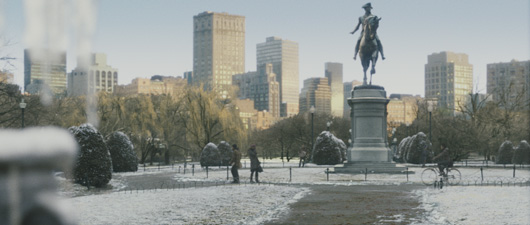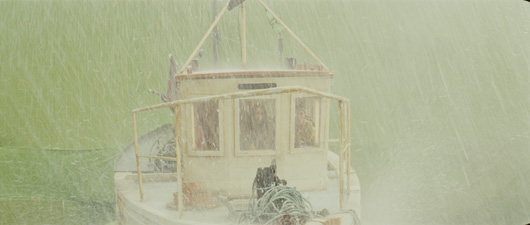Studio/Direct: Leap Year isn’t as obviously FX-heavy as some of your other projects.
Matt Johnson: That’s true, but I think it’s the way of things to come. Clearly, this is not Avatar or Transformers, but more and more movies that viewers wouldn’t think of as FX-heavy actually feature quite extensive visual effects.
How did the film come to rely on digitally-created locations?
The film was primarily shot in Ireland, but scenes in the movie take place in the states as well, like Boston. It was logistically complicated for the studio to shoot the movie in Boston and then move the production over to Dublin. Cinesite provided a digital backlot so they could shoot the movie in Dublin and then we would digitally add the Boston backgrounds. Rather than go to the expense of sending a film crew over to Boston to shoot the various plates, they elected to send a two-man stills unit who shot a series of hi-resolution digital stills at various locations.

How did you work with the still images?
We took the still images and did a technique whereby the still images were multi-planed or projected onto geometry. We mapped the stills onto a geometry of the Boston environment-so you can then create a sense of parallax within the still. As the camera was tracking back, we were able to extrapolate the tracking information from the foreground plate and then project that back. In other words, the sky doesn’t move at all, the skyscrapers move less and, as you get closer, the parallax is more. We did a series of manipulation techniques to map the still images onto basic geometry, so that you get more of a sense of 3D movement-like you can just about look around that bench.
How did you add people to the environment?
In Dublin, we had about 30-40 extras in heavy winter overcoats-which was ironic because Dublin was suffering from a rare heat wave, so it was actually roastingly hot. We set up a production line and had everyone walk left to right and right to left. We had some people reading newspapers or drinking Starbucks or checking their watch. Then we could cut them out of the greenscreen element and place them anywhere we wanted. So the person jogging in the far background of the park was on a greenscreen in Dublin. The person drinking coffee is from another plate, just to give more life to the scene.
Did you use any props in the sets?
Yes. For example, there’s a scene in the movie when the character, Amy Adams, is walking through a park in Boston; the movie takes place in February so it’s supposed to be snowy Boston. The stills team hit the park in spring so it wasn’t snowy. Those images were then manipulated. In Dublin, we lined up some moves to match the perspective and shot Amy walking against a greenscreen with some limited foreground sets, like a frozen fountain. Everything else was added digitally
It seems like this strategy gives you a lot of control over the environment.
It does. In order to give a realistic sense of a Boston park scene, you need life and movement. If you were shooting that on location, you’d have to close down the area and have extras and everyone there in wardrobe. Every time you did a shot, you’d have to reset all the backgrounds. You’d have to control a much larger area. We were able to remove any people in the stills and replace them with our own extras so there were no copyright issues. We could do three or four greenscreen environment shots a day, whereas if we were shooting those for real, it probably would have taken half a day just to set up one of these shots. Instead of moving locations, we were on the same greenscreen studio in Dublin.



Leave a Reply